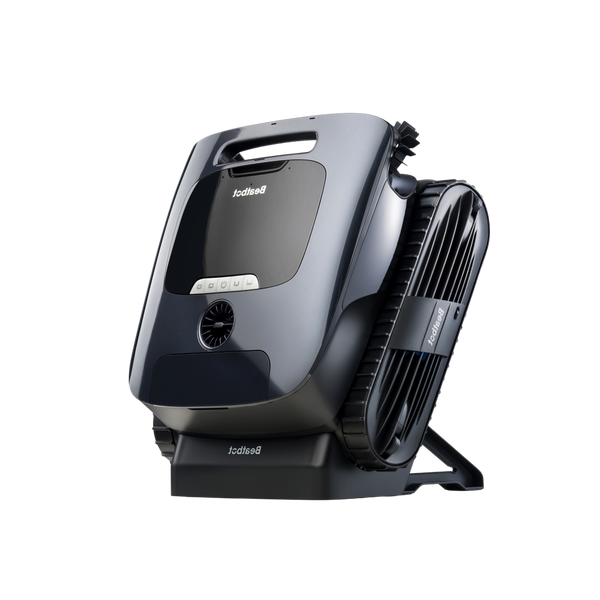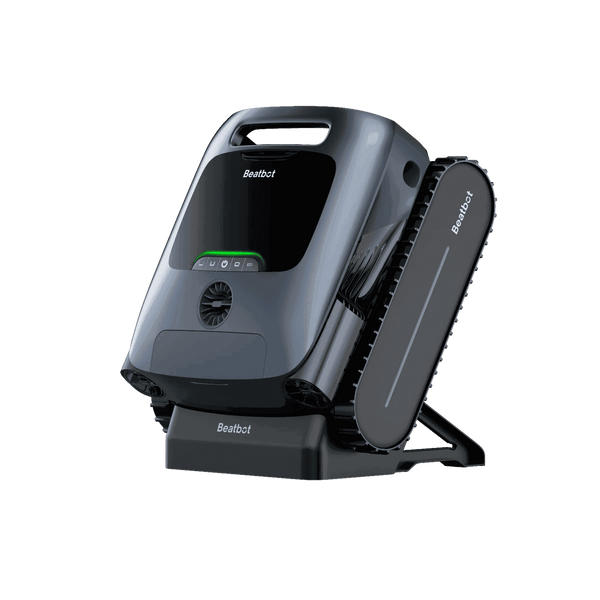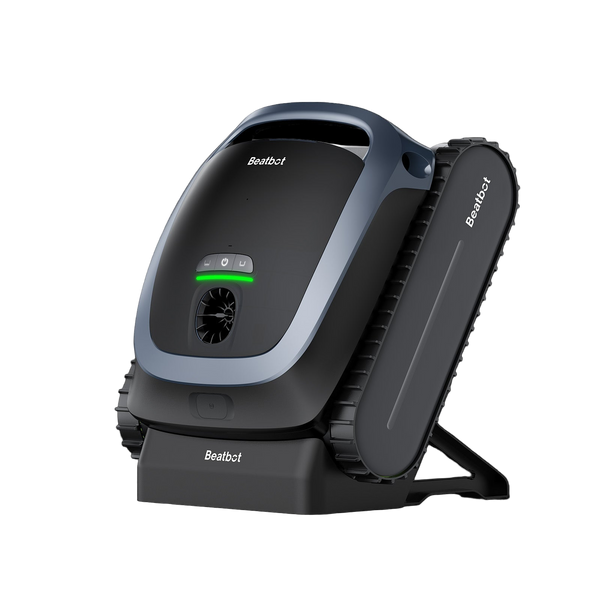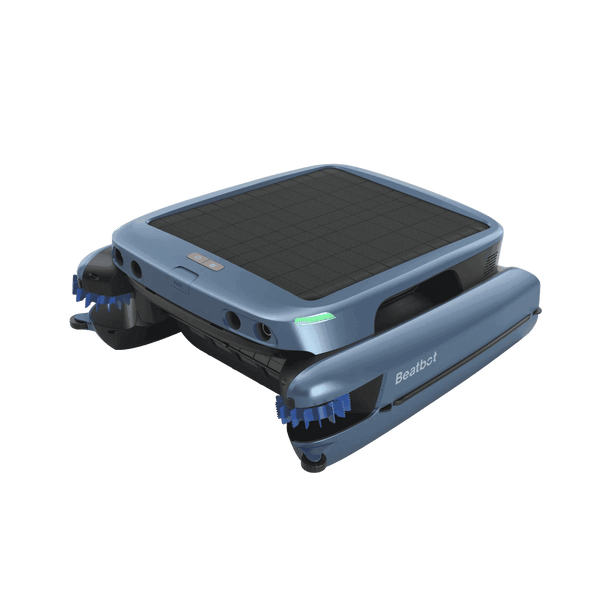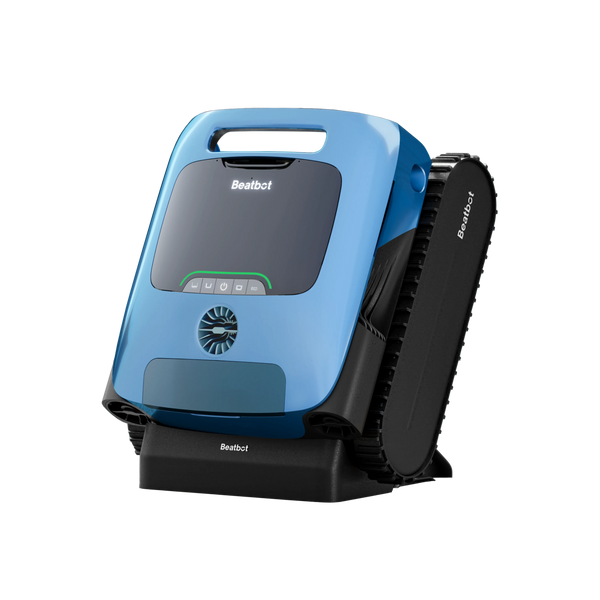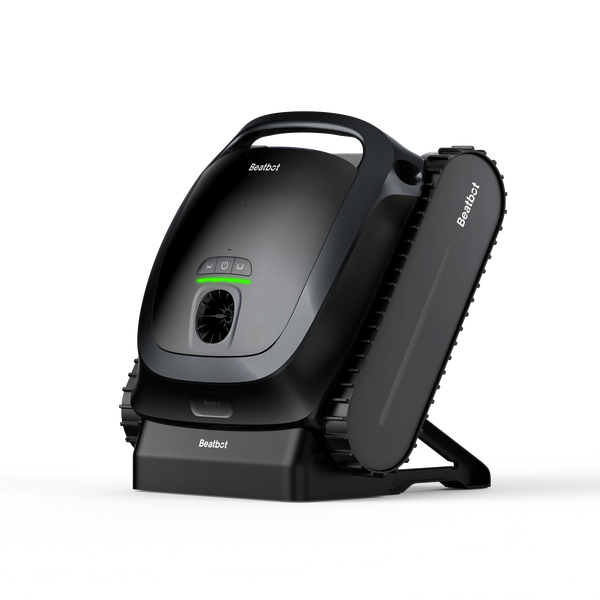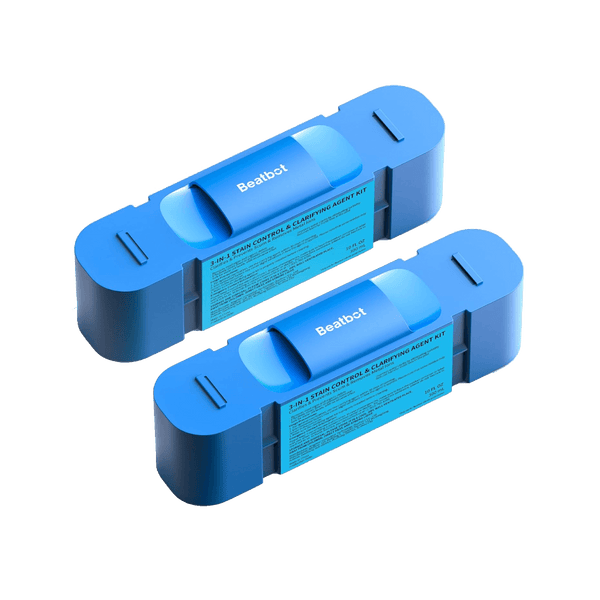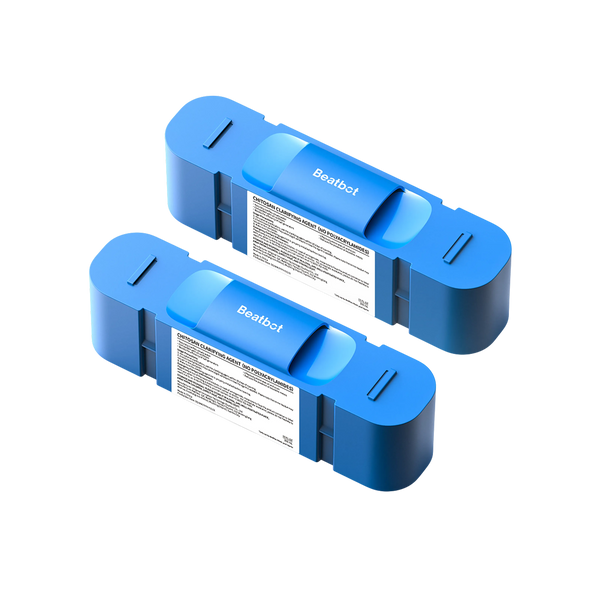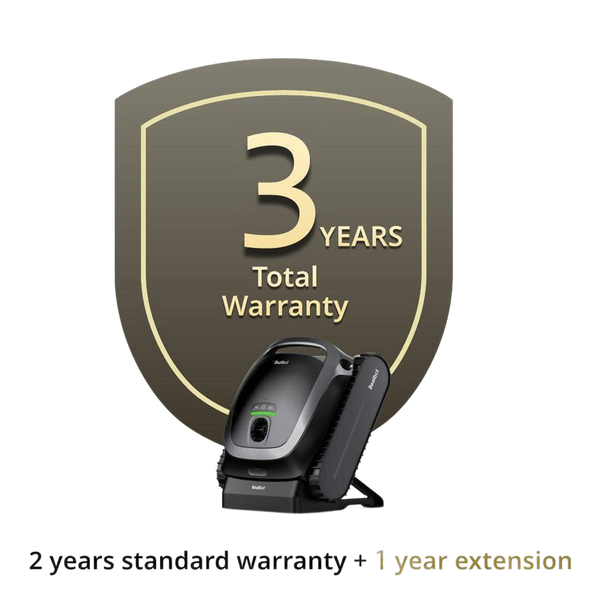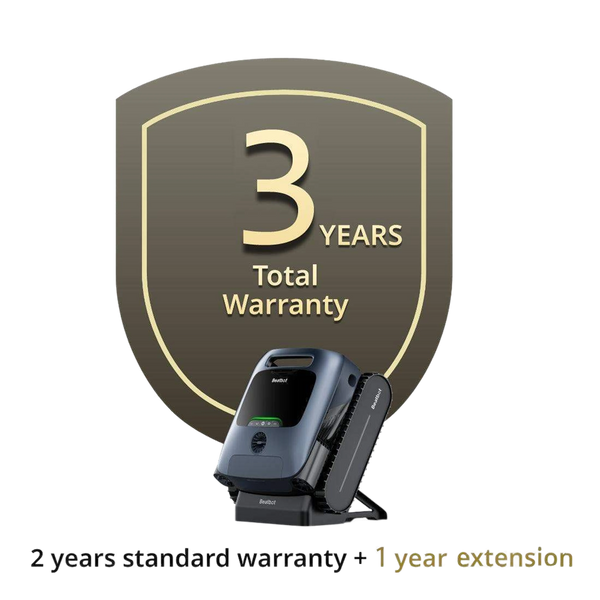Is a DE Pool Filter Necessary?
Imagine coming home after a long day to dive into your own private oasis, only to find a murky mess where your pool should be. For pool owners seeking the ultimate in water clarity, the DE pool filter stands out as a champion of cleanliness. But do you really need one? Let's unpack what makes a DE filter tick and how it stacks up against the competition.
Table of contents

Diving into DE Filters: What is It?
Picture this: a natural substance, older than time itself, is now at the heart of your pool's cleanliness. DE filters harness the power of diatomaceous earth, a fine, sedimentary rock derived from ancient marine life. This powdery substance is applied to the filter grids, acting like a microscopic net that captures particles as tiny as 2-5 microns—far smaller than what traditional sand or cartridge filters can manage.
How DE Filters Keep Your Water Sparkling
The magic happens when water flows through those DE-coated grids. The diatomaceous earth does the heavy lifting, trapping dirt, debris, and even microscopic contaminants, while the clean water gets a free pass back to your pool. It's like having a team of nano-scale cleaners working around the clock to keep your water picture-perfect.
Going Head-to-Head: DE vs. Other Filters
When pitted against sand and cartridge filters, DE filters pull ahead in the filtration race. While sand filters can handle particles around 20 to 40 microns, DE filters start shining with their ability to capture even the smallest bacteria and algae. Cartridge filters, though low-maintenance, can't match the precision of DE and have a shorter lifespan, requiring more frequent replacements.
How is Cleaning a D.E. Filter Different from Cleaning Other Pool Filters?
Cleaning a D.E. (Diatomaceous Earth) filter involves a unique process compared to other pool filter types, largely due to its specialized maintenance schedule and safety precautions.
Maintenance Schedule
Unlike typical cartridge and sand filters, a D.E. Filter requires a more frequent and specific cleaning routine:
- D.E. Filter: Suggested to be cleaned around once a month to maintain optimal performance.
- Cartridge Filter: Requires a light clean monthly but only needs a deep clean one to three times annually.
- Sand Filter: Cannot be directly cleaned; it should be backwashed when the pressure gauge exceeds the starting pressure by 10 psi.
Safety Precautions
The cleaning process for a D.E. Filter demands heightened caution due to the nature of diatomaceous earth itself:
- Protective Gear: Wear an N95 mask, gloves, and long-sleeved clothing to prevent skin and respiratory exposure.
- Immediate First Aid: If diatomaceous earth contacts your skin, rinse the area with water for at least fifteen minutes. For eye exposure, flush with water for at least fifteen minutes and remove contact lenses after the first five minutes.
Health Warnings
It is crucial not to mix D.E. With other chemicals or inhale its dust. Persistent irritation in the lungs, mouth, eyes, or skin should be addressed by contacting a healthcare professional or poison control center.
This comprehensive care approach for D.E. Filters differentiates them sharply from other filter types, emphasizing a commitment to effective filtration and user safety.
The DE Filter's Secret Weapons
Filtration Prowess: DE filters are like the fine-dining option for filtration, catching the smallest of particles for the cleanest water you've ever seen. However, despite this prowess, remember that a sand filter with the right media can also achieve similar results.
Water Quality Boost: By sweeping up the littlest bits of grime, DE filters help you use fewer chemicals, leading to better water quality and less maintenance. But it's crucial to handle DE media with care due to its potential health risks. DE is a known carcinogen, and exposure can lead to lung diseases like silicosis, so always wear an N95 mask when handling it.
Longer Lifespan: DE filters don't need as much attention as other filters, reducing the time and water wasted on cleaning. But keep in mind, they are the most high-maintenance filters available, and their upkeep can be both costly and time-consuming.
Cost-Effective Longevity: The upfront cost might be higher, but DE filters save you money in the long run with less chemical use and a longer lifespan. Yet, be prepared for potential headaches associated with maintenance, such as backwashing, which could be illegal in some areas and is harmful to the environment.
Eco-Friendly Choice: Since DE is natural, choosing a DE filter is a greener option for keeping your pool clean. However, the environmental impact of backwashing should be considered, and it's essential to stay informed about local regulations to avoid any legal issues.
By understanding both the benefits and drawbacks of DE filters, you can make a well-informed decision about whether they are the right choice for your pool.
Keeping Your DE Filter in Tip-Top Shape
Routine Checkups : Give your filter a once-over at least once per season, or when you notice the pressure gauge creeping up. This includes checking for any unusual debris accumulation that might indicate it's time for a more thorough cleaning. Keep an eye on your filter's pressure gauge, and backwash when it reads 10 psi above its normal operating pressure.
Backwashing Basics : Backwashing flushes out the gunk and keeps your filter running smoothly. It's like a spring cleaning for your filter. Aim to backwash every six months or whenever necessary, ensuring the process lasts 3–5 minutes, and ends when the water runs clear from the backwash line.
Grid Grime Fighters : Regularly wash the grids to prevent algae or mold growth. This deep cleaning is recommended once or twice a year. However, during the swim season, consider disassembling the filter monthly to remove any caked D.E. Powder, ensuring your system remains efficient.
D.E. Powder Refill : After backwashing, top up the D.E. Powder in your skimmer to replace what you've lost. A good rule of thumb is one pound of D.E. For every 10 square feet of filter surface area. This step is crucial for maintaining the filter's effectiveness.
Replacement Insights : It's not just about cleaning; it's about knowing when to replace parts. Consider replacing your D.E. Grids every 4–6 years, depending on use, to ensure optimal performance.
Water Watch : Keep an eye on your water's clarity and that pressure gauge. If things start looking cloudy or the pressure spikes, it's time to take action. Remember, clear water isn't just about aesthetics—it's a sign your filter is doing its job.
What Equipment Do You Need to Clean a D.E. Filter?
To effectively clean a diatomaceous earth (D.E.) filter and keep your pool sparkling, you'll want to gather the following supplies:
- Backwash Hose : Essential for removing dirty water from your pool system.
- Garden Hose : Used for rinsing off the filter grids.
- Lubricant for O-Rings : Helps to maintain a tight seal and prevent leaks.
- D.E. Filter Cleaner : A specialized cleaner to break down oils and grime on the grids.
- D.E. Powder : Replenish the D.E. Powder that captures debris in the filter.
- 5-Gallon Bucket : Useful for mixing solutions or transporting water.
- Muriatic Acid : Helps to remove any calcium deposits on the filter.
- Safety Goggles : Protects your eyes from splashes when handling chemicals.
- Acid-Resistant Gloves : Essential for hand protection against corrosive substances.
With these tools at your disposal, you'll be ready to perform thorough maintenance on your D.E. Filter, ensuring your pool stays clean and inviting.
How to Clean a D.E. Filter with Muriatic Acid
Cleaning a Diatomaceous Earth (D.E.) filter periodically is essential for maintaining optimal pool performance. Using muriatic acid is one effective way to deep clean your filter. Follow these steps to ensure a thorough clean:
Initial Preparation
Backwash the Filter: Start by backwashing your D.E. Filter for 3–5 minutes. This process helps remove the majority of accumulated dirt and debris. Continue until the water appears clear.
Shut Down the System: Turn off the pool pump to ensure safety while performing the subsequent steps.
Release Air and Water: Open the air relief valve on the filter and remove the drain plug. Allow all the water to drain completely from the filter tank.
Disassemble the Filter
Remove Clamps and Latches: Carefully take off any clamps or latches holding the filter together. Refer to your owner’s manual for guidance if you encounter any difficulty.
Extract Components: Open the filter tank to access the interior components. Remove the manifold and carefully take out the filter grids. Set them aside for cleaning.
Cleanse the Filter Elements
Rinse the Tank: Use a garden hose to rinse out the interior of the filter tank, ensuring all loose debris is washed away.
Clean the Manifold: Utilize a hose with a spray nozzle to thoroughly clean the manifold, removing any debris from the grids.
Acid Cleaning
Prepare for Acid Use: Ensure safety by donning protective gear such as goggles, acid-resistant gloves, long sleeves, and closed-toe shoes.
Prepare Acid Solution: Dilute muriatic acid in a 5-gallon bucket, adhering to the manufacturer's dilution recommendations. Ensure adequate ventilation.
Soak the Manifold: Submerge the manifold completely in the diluted acid solution. Allow it to soak overnight to break down any remaining deposits.
Final Rinse and Reassembly
Rinse and Reinstall Grids: After soaking, use a garden hose to rinse the filter grids thoroughly, removing all residues including D.E. Powder. Reassemble the grids back into the filter tank.
Restart the System: Run the pool pump for at least 30 minutes. This step ensures that the D.E. Powder re-establishes over the filter grids evenly, maximizing filtration efficiency.
By following this methodical approach, you can effectively maintain your D.E. Filter using muriatic acid, ensuring both longevity and optimal function of your pool's filtration system.
How to Backwash a D.E. Filter: A Step-by-Step Guide
Backwashing a D.E. (Diatomaceous Earth) filter is essential for maintaining your pool’s water quality and ensuring the equipment runs efficiently. Follow these simple steps to backwash your filter effectively.
Step 1: Prepare the System
- Power Down : Begin by turning off the pool’s filter system completely. This is crucial to prevent any operation during setup.
Step 2: Connect the Backwash Hose
- Attach the Hose : Connect a backwash hose to the waste port of the filter. This is where the expelled water and debris will exit during the process.
Step 3: Adjust the Valve
- Set the Valve to "Backwash" : Turn the multiport valve on your filter to the "Backwash" position. This adjustment directs the flow of water through the filter in reverse, cleaning the filter media.
Step 4: Initiate Backwashing
- Restart the System : Turn the filter system back on and run it for approximately two minutes. Observe the sight glass or water in the waste to determine when it runs clear, indicating that backwashing is complete.
Step 5: Rinsing Cycle
- Switch to "Rinse" : Once backwashing is finished, turn off the filter system again and set the multiport valve to "Rinse." This step ensures any leftover debris is flushed out.
Step 6: Rinse the Filter
- Run the Rinse Cycle : Turn the system back on and let it run for about one minute. This helps settle the filter media back into place and clears any remaining particles.
Step 7: Return to Normal Operation
- Turn Off and Reset : Power down the system once more, then return the multiport valve to the "Filter" position.
By following these well-defined steps, your filter is now backwashed and ready to maintain your pool’s cleanliness. Regular backwashing helps prolong the life of your D.E. Filter and keeps your pool water sparkling clean!
FAQ
Q: How often should the DE filter be cleaned?
A: A good rule of thumb is every 4 to 6 weeks, but it depends on how much you use your pool and what's happening in your environment.
Q: Is maintaining a DE filter a hassle?
A: It requires a bit of TLC, like backwashing and refreshing the DE powder, but the results are worth it.
Q: Can DE filters be used in above-ground pools?
A: Absolutely! Just make sure you get a model that's a good fit for your pool's water volume.
Q: What safety tips should I know when handling DE powder?
A: Treat it with respect! Use a dust mask and goggles, and follow the safety instructions on the packaging. Here’s a step-by-step guide to ensure you refill your D.E. Filter safely and effectively:
Measure the D.E. Powder : Refer to your filter owner’s manual to determine the exact amount of D.E. Powder needed.
Prime the Pool Pump : Ensure your pool pump is primed and ready for action.
Fill the Strainer Basket : Remove the strainer basket lid. Fill the basket with water, allowing some to run through the incoming line to ensure proper flow.
Lubricate the O-ring : Apply a generous amount of O-ring lubricant to the O-ring inside the tank. This step is crucial for maintaining a good seal!
Secure the Filter Lid : Replace the filter lid, and tighten all clamps, bolts, or fasteners to secure it firmly.
Open the Air Relief Valve : Release any trapped air from the filter tank by opening the air relief valve.
Activate the Pool Pump : Turn on the pool pump to get it going.
Close the Air Relief Valve : Once water starts flowing out, close the air relief valve to maintain optimal pressure.
Mix the D.E. Powder : Mix the measured D.E. Powder with water to create a thin, creamy solution. Double-check that the pump is running throughout this step.
Add the Mixture : Carefully pour the mixture directly into the pool skimmer. Keep the pump running for at least 30 minutes to ensure even distribution over the filter grids.
Conclusion
While a DE pool filter might not be for everyone, its ability to deliver clear, pristine water makes it a compelling choice. By understanding the benefits and the straightforward maintenance routine, you can decide if a DE filter is the right fit for you. After all, who doesn't want to swim in water that's as clear as a mountain lake?
Relative Blogs
About the author
